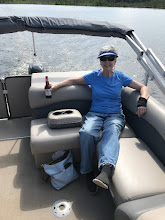
Oregon’s boating fatality rates consistently outnumber the U.S. average. In fact, it is documented that the Pacific NW coast of California, Oregon, and Washington is more deadly in pure fatality numbers than Alaska’s dreaded Bering Sea. Out of the three states, by far and away, it is Oregon’s coastline which claims the greatest number of victims. Analysis shows that Oregon has some of the worst sea weather, treacherous tides, shoals, rocky shorelines and bar crossings of any waters.
Oregon State Marine Board Boating Accident Statistics


A bar is simply a narrowed opening where a river meets the ocean. Frequent shoaling and shifting deposits of sand can change the character of the bar from day to day. For small, recreational boats in particular, crossing them is always inherently dangerous. I have only crossed this one a few times but it always makes me uneasy to feel the power of the undulating wave rise beneath us and lift our boat to surfboard position in the blink of an eye. “Thrilling” just doesn’t quite seem to convey the entire concept.
On a recent clearing afternoon, I stood at the south jetty watching the interplay of tide, wind, and waves, still showing signs of the recent storms. No boats were out; for obvious reasons the Coast Guard had closed the bar.


Unsafe bar conditions are listed as: wave height 4 feet or greater, or wave height which is greater than the length of the boat divided by 10 plus the freeboard, or surface current of four knots or greater. Watching the tide rip through the narrowed channel and meet with the ocean waves, creating a frothy cauldron, there was no question that it was the last point causing the closure today. The waves came roaring ashore with hardly any time between swells and left me glad to be standing on land rather than riding the boiling point of today’s bar. A mariner’s good rule of thumb: if the sum of the Wind Waves + the Height of the Swell exceeds the Time (between swells), in seconds, STAY HOME. Sounds good to me.





